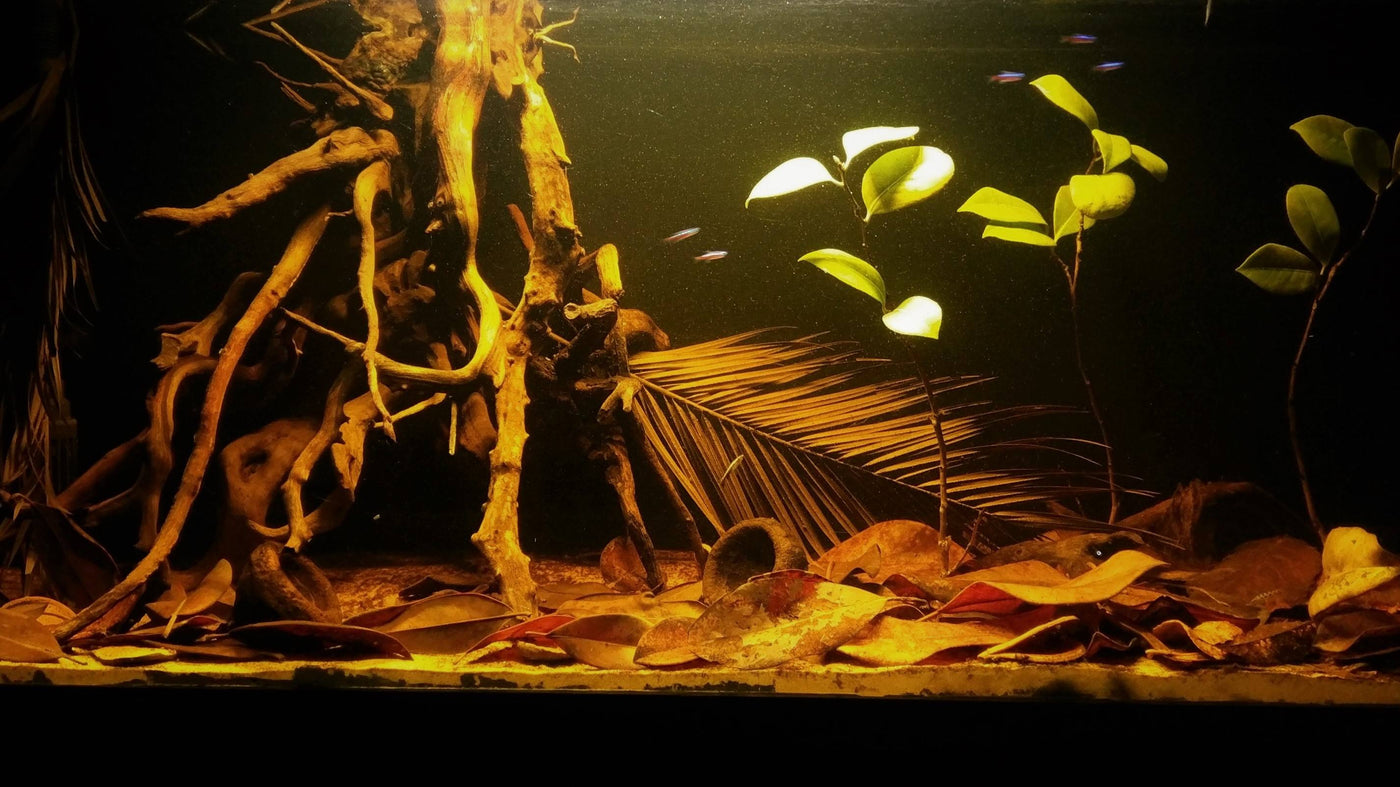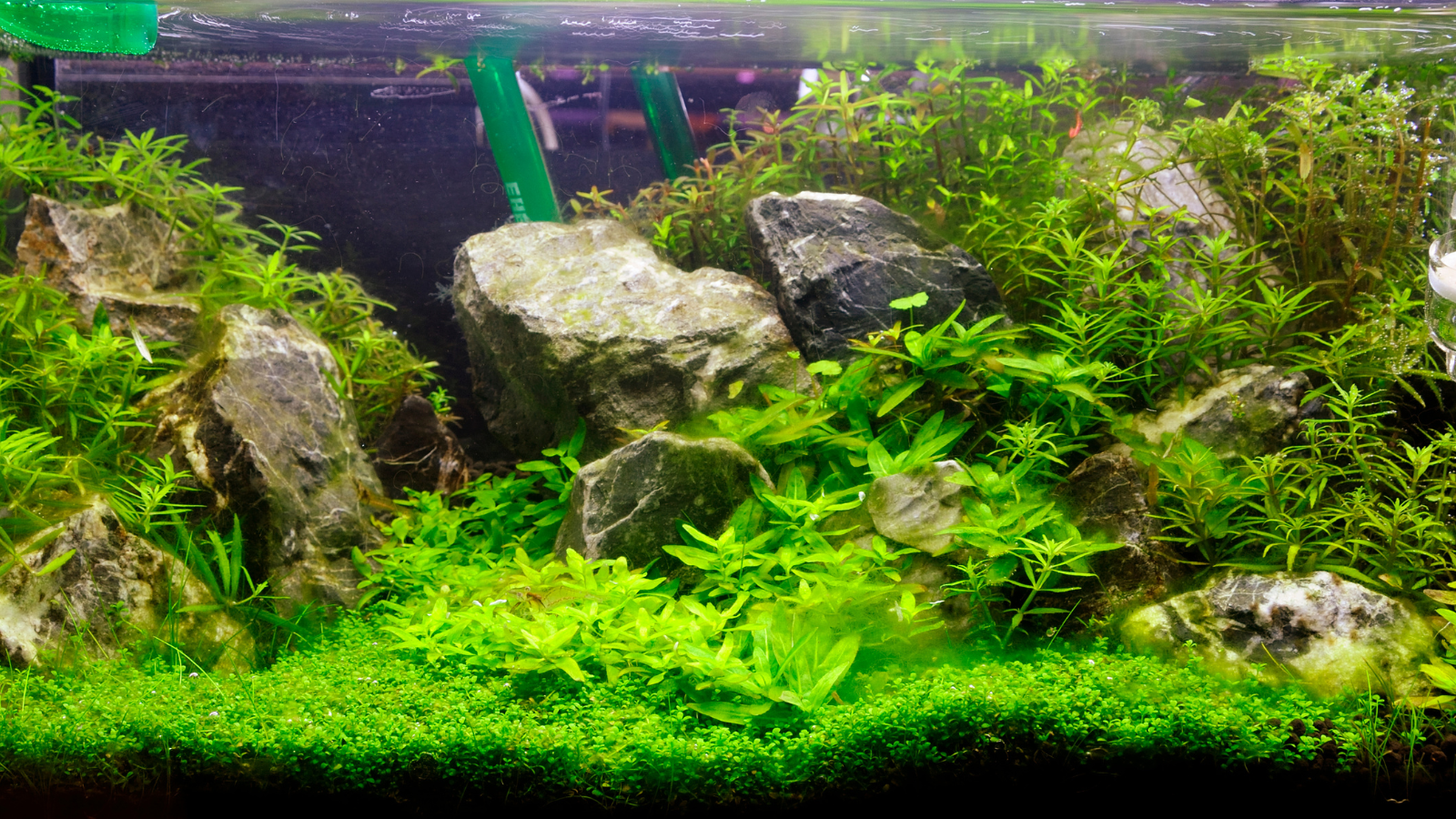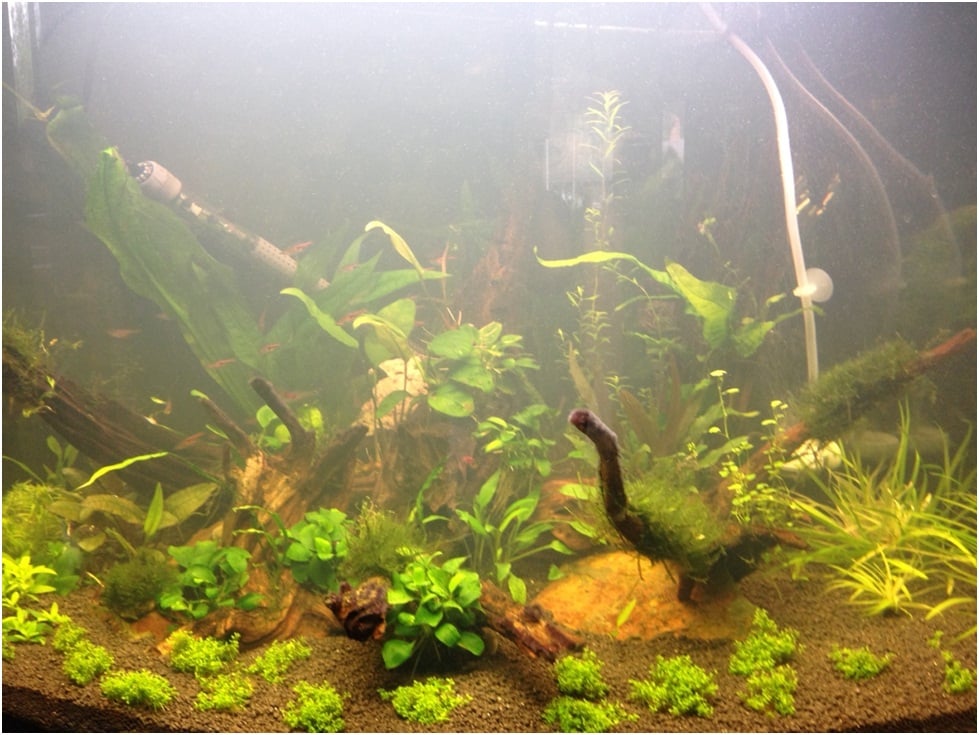
Our final instalment in our aquascaping style series lets us delve deep into the underwater worlds of our favourite fish. While the purpose of most aquascapes is to create aesthetically pleasing underwater living art, our final blog is all about the fish and providing them with an aquarium that is as close to their natural environment as possible. From blackwater bogs to brackish bays this genre has them all…
The Biotope Aquarium
One thing that you have to understand and accept when you embark on a biotope aquarium project is that what you are about to create is about recreating your aquatic pets natural habitat. This often results in an aquarium that can seem a bit different from your run of the mill fish tank. What you will likely end up with is a messy, unorganised and dark looking aquarium to the untrained eye. However if done correctly, you will have some very happy fish displaying behaviour that you may not have ever seen in a standard setup.
When you decide you want to create your biotope, the absolute most important thing to do is research your chosen species - more specifically, the environment your fish can be found in the wild. There are specific elements of their habitat that you need to understand in order to help you create the best possible aquarium.
- The aquatic life found in this specific ecosystem or section of river/lake. Fish, Snails, Shrimps should all be noted and every attempt should be made to include the correct species.
- Plant life is important to create the proper look. Not only that, the correct choice of plants offers some fish a place to spawn or graze, just like they do in the wild.
- Identifying the proper substrate of your chosen habitat and providing this in the home aquarium is vital for bottom dwelling species.
- Water chemistry should be matched. This can be done with certain conditioners or adding specific wood or rock to your aquascape.
- Water flow can often be overlooked in the home aquarium however with biotope aquariums it is important to replicate this to promote the natural behaviour of your tank inhabitants.
- Your water temperature plays a very important role. In the wild, fish are triggered into breeding during certain seasons when there water temperature drops or rises. Knowing your habitats temperature behaviour will aid breeding in your biotope.
- Lighting can make or break a good biotope. Some habitats are deep in jungles with very little sunlight reaching the water.
Biotope aquariums presents the aquascaper a set of challenges that no other aquascape does. While special attention is required when thinking about the layout of the rocks, plants and wood, the entire aim is to achieve an ecosystem. Some of the worlds rarest tropical fish are being care for in aquariums and in order to give these fish a chance again, the importance of matching the habitat is second to none.
Heiko Bleher is known across the world for his biotope books. For over 50 years Heiko has been studying the natural habitat of tropical fish and teaching hobbyists how to recreate these environments in the home aquarium. Recently Both Heiko and his wife Natasha have launched the excellent Biotope Aquarium Project. Their aim is to create an online database of fish species and their biotope information. Having a database like this will offer the anyone looking to provide the absolute best environment for their fish, an invaluable databank of information got access.
So if your looking for a new challenge we strongly recommend researching the Biotope Aquarium. Not only will you be challenging yourself, you will be providing a natural, healthy home for your fish. But before you get started remember to research EVERYTHING.
This is a nice example of a Malaysian blackwater peat creek biotope
created by Borko

A very nice South American Biotope created by 'Wishmaster'

Finally here is a very good example of a shallow blackwater habitat from the middle Rio Negro. The creator James Sheen researched a specific area of flooded forest just outside of the city of Barcelos, in the Amazonas state, Brazil



